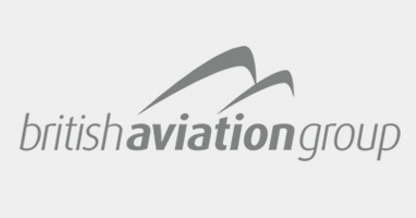The UK’s aviation sector plays a vital role in the country's economy, connecting businesses and individuals to the global market. It is imperative for this sector to remain robust and resilient, especially in the face of evolving cybersecurity threats. The Network and Information Systems Directive 2 (NIS2) is a European Union directive that aims to enhance the overall cybersecurity posture of critical infrastructure sectors, including aviation. In this article, we will explore NIS2 and its impact on the UK aviation sector.
Understanding NIS2
NIS2 is the successor to the original NIS Directive and represents the European Union's efforts to fortify the cybersecurity of essential services and critical infrastructure. While NIS1 focused primarily on industries such as energy, finance, and healthcare, NIS2 widens its scope, encompassing an extended range of sectors that are essential to our society. The UK, though no longer an EU member state, continues to align itself with EU cybersecurity regulations, such as NIS2, to maintain strong ties with the European market. Key date is the 24th October 2024, this is when it comes into force.
Fines that can be levied under NIS2
For essential entities, it requires Member States to provide a maximum fine level of at least €10,000,000 or 2% of the global annual revenue, whichever is higher.
For important entities, NIS2 requires Member States to fine for a maximum of at least €7,000,000 or 1.4% of the global annual revenue, whichever is higher.
NIS2 Compliance in Aviation
The aviation industry relies heavily on digital infrastructure, from air traffic control systems to online booking platforms. As a critical infrastructure sector, aviation is bound by NIS2 regulations to ensure the cybersecurity and resilience of its digital assets. Airlines, airports, and air navigation service providers (ANSPs) operating within the UK must adhere to the NIS2 framework, which includes several key components:
Risk Management: Organisations in the aviation sector are required to conduct regular risk assessments to identify vulnerabilities and threats. This includes understanding the potential impact of cyber incidents on their operations.
Reporting Requirements: NIS2 mandates that aviation organisations report significant cybersecurity incidents to relevant authorities, such as the Civil Aviation Authority (CAA). This facilitates a coordinated response to mitigate the impact of cyberattacks.
Security Measures: The directive also prescribes a range of security measures that organisations must implement to safeguard their networks and systems. These measures include network security, incident response plans, and secure data handling.
Impact on the UK Aviation Sector
Enhanced Cybersecurity: NIS2 compels aviation organisations to invest in and prioritise cybersecurity. This commitment to bolstering digital defenses not only protects sensitive data but also enhances passenger safety and the overall integrity of the aviation sector.
Improved Incident Response: NIS2 promotes a more coordinated approach to incident response, allowing the aviation sector to react swiftly to cyberattacks. This minimises disruptions to operations and ensures the safety of passengers and crew.
International Cooperation: While NIS2 is a European directive, the international nature of the aviation industry necessitates cooperation beyond national boundaries. The UK's alignment with NIS2 helps maintain a consistent approach to cybersecurity and facilitates collaboration with European partners.
Challenges and Considerations
Although NIS2 offers several advantages, it also presents challenges to the UK aviation sector. These include the cost of implementing cybersecurity measures, potential disruptions to daily operations during security upgrades, and the need for ongoing training and education to keep staff up to date with evolving cybersecurity threats.
Managed Detection and Response as a key tool for effective network monitoring under NIS2
In order to address the challenges posed by NIS2 and ensure the security and resilience of their network and information systems, Managed Detection and Response solutions are indispensable for organisations needing to comply with NIS2. MDR offers a number of benefits for organisations to comply with NIS2, including:
Visibility: MDR solutions provide comprehensive monitoring of network traffic, enabling organisations to identify potential threats and vulnerabilities before they can be exploited.
Detection: By continuously monitoring network traffic, MDR solutions can detect and alert organisations to suspicious activity, such as unauthorised access attempts or data exfiltration.
Response: MDR solutions enable organisations to respond quickly and effectively to potential threats by triggering incident response procedures automatically through the use of sophisticated playbook’s.
Compliance: MDR solutions can help organisations meet the reporting requirements under NIS2 by providing detailed logs and reports of network activity and incidents.
Overall, MDR serves as a key tool for organisations to comply with the updated NIS Directive and ensure the security and resilience of their network and information systems.
Conclusion
NIS2 is a critical step towards strengthening the cybersecurity of the UK aviation sector. By promoting risk management, improving incident response capabilities, and fostering international cooperation, it enhances the overall resilience and security of this vital industry. The UK's alignment with NIS2 not only benefits the aviation sector but also underscores the importance of international collaboration in the fight against cyber threats. In a digital age, safeguarding critical infrastructure like aviation is paramount, and NIS2 plays a significant role in achieving that goal.
For more information please contact: Nathan.Timbrell@Fujitsu.com.







